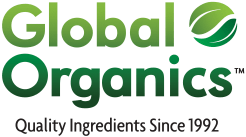10 Types of Cane Sugar
08.16.2016 | Author: Global Organics | Category: Cane Sugar & Sweeteners
Whether it’s labeled as-is or hiding under a name like evaporated cane juice or dried cane syrup, sugar is an ingredient in nearly every food category. But sugar is sugar, right? Actually no - all sugars are not created equal. There are many different types of sugar and some perform better in certain applications than others.
Beyond adding sweetness, sugar plays a key role in product color, texture and mouthfeel. Sugar is necessary for the mouth-watering flavor and color produced by browning or caramelizing foods like the golden top of a fresh-baked cookie or the caramelized edges of roasted vegetables. Sugar is also essential for fermentation in yogurt, bread and soy sauce. Sugar can even help prevent baked goods from becoming stale or dry and can preserve color in frozen fruit products.
When formulating food products, it’s important to consider different types of sugar to determine which is best for your needs. However, understanding the distinctions between types can become tedious and confusing. We created the following guide to help expand your knowledge of cane sugar sweeteners and their defining qualities. By the end of this article, you should have a better sense of which type(s) of sugar you need for your next hit product.
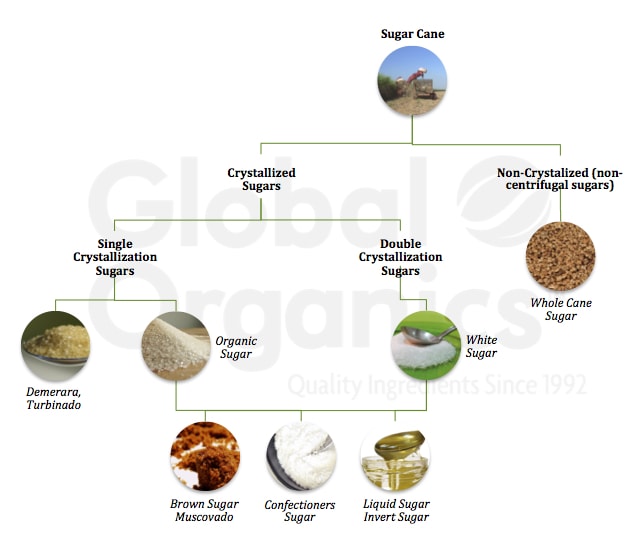
Crystalized Cane Sugar
Organic Cane Sugar
Measuring Color:
The color of sugar crystals can vary, especially with organic cane sugar. Color is measured and specified according to the International Commission for Uniform Methods of Sugar Analysis (ICUMSA). ICUMSA units range from 45 IU (refined white sugar) to 16,000 IU (very dark brown sugar).
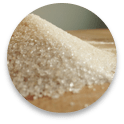
To produce crystalized organic cane sugar, or organic granulated sugar, sugar cane stalks are first harvested and crushed. The resulting juice is clarified to remove solids, heated, and concentrated into a syrup. This syrup is made up of sugar and molasses. The syrup is seeded with sugar crystals to promote crystallization, boiled and put in a centrifuge to separate out some (but not all) of the molasses. Finally, it is dried and packaged.
Organic cane sugar is a single crystallization sugar, because it was only crystalized once. The ingredient some refer to as evaporated cane juice is also a single crystallization sugar (whether it is organic or conventional).
Because some molasses and trace minerals are retained inside the crystals, organic sugar crystals are golden in color and can have a mild, pleasant floral or fruity aroma and flavor. Organic cane sugar also tends to have slightly larger crystals than white sugar and size can vary by origin.
Conventional White Sugar
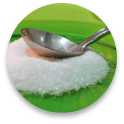
What about beet sugar?
This guide deals only with cane sugar but some sugar comes from sugar beets. Once made into white sugar, cane and beet sugar are indistinguishable. According to the USDA, 55% of the sugar produced in the US is beet sugar and 95% of the US sugar beet crops are genetically modified. Since organic certification prohibits GMOs, most organic sugar is cane sugar. Unlike beet sugar, cane sugar is always non-GMO because there are no commercially viable GMO sugar cane varieties.
Conventional white sugar is also referred to as refined sugar, granulated sugar or table sugar. Besides the many agricultural differences between conventional and organic cane sugar, white cane sugar is made from re-melting conventionally grown single crystallization sugar (see “organic cane sugar” above). It is then refined further to remove all traces of molasses and minerals before being re-crystallized as pure sucrose. Since white sugar is crystallized twice, it is a double crystallization sugar. After that, it is whitened, using carbon filtration (sometimes bone char) and ion exchange (resin), before being dried and packaged. White sugar is available in many crystal sizes such as baker’s special, fine, ultrafine, caster and sanding sugar.
Demerara, Turbinado & “Sugar in the Raw”
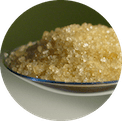
The name Demerara refers to the area of British Guyana in which this type of sugar originated. Turbinado simply means “of the turbine,” or centrifuge. There is no official definition but it typically describes a sugar similar to Demerara. "Sugar in the raw" is a Turbinado style sugar.
Both Demerara and Turbinado are single crystallization sugars with large, well-formed crystals. While in the centrifuge the surface molasses is washed off with steam but the molasses inside each crystal remains intact. This results in a dry, free-flowing, pale golden sugar with a mild molasses flavor. The larger crystal size makes an excellent sanding sugar for bakery products and brings a smooth flavor and crunch as a topping.
Demerara and Turbinado sugar are sometimes lumped into the category of “brown sugar.” However, unlike the brown sugar described below, these are dryer, more free-flowing and have larger crystals.
Brown Sugar
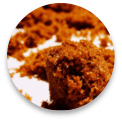
Brown sugar is a combination of crystalized sugar and molasses but every processor makes it slightly differently. This causes variations in size, color and stickiness. Purchasers should pay special attention to specs because of these differences. It is also important to get samples from multiple suppliers to find one that best suits your needs.
Two methods of processing brown sugar are as follows:
- First, it can be crystalized at origin where the molasses is not removed or is only partially removed. Muscovado, also known as Barbados sugar, is a type of brown sugar that fits into this category. While there is no official definition, the term muscovado usually refers to a dark, molasses-rich sugar that is only partially centrifuged. Muscovado is very sticky, moist, dark in color and has flavors of molasses and burnt sugar.
- The second method does not have to be completed at origin. Instead, molasses is added into conventional white or organic cane sugar after the sugar has been fully produced. Global Organics’ organic light and dark brown sugar are made this way using Native organic cane sugar. These moist sugars are slightly less sticky, have a fruity or floral aroma and a moderate molasses flavor.
Finally, there is the distinction between light and dark brown sugar. Dark brown sugar simply has more molasses than light brown sugar, so it is darker in color and has a stronger molasses flavor and aroma.
Confectioners Sugar
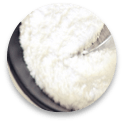
Also known as powdered sugar or icing sugar, confectioners sugar is made from very finely ground conventional white or organic cane sugar. Powdered sugar is available in several degrees of fineness, or particle sizes, ranging from 3X to 14X (the higher the number, the smaller the grain).
A small amount of starch is added to the ground sugar to prevent clumping. Conventional confectioners sugar is almost always made with cornstarch whereas organic confectioners sugar can be made with either organic cornstarch or organic tapioca starch. Because both starches are well refined and used in small amounts, they do not impact the flavor of the final product. However, sugar made with cornstarch and tapioca starch can behave differently when heated.
Liquid and Invert Sugar
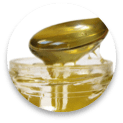
Organic cane sugar or conventional white cane sugar can be used to create liquid or invert sugar. Liquid sugar is crystalized sugar that has been dissolved in water. This is helpful for use in applications where the sugar would need to be dissolved. Organic liquid sugar is available in regular or low color. To make the low color, the syrup goes through a carbon filtration process to remove impurities.
Liquid sugar is best for large-scale applications where an ingredient that can be pumped directly into the line increases efficiency. For some products like beverages or yogurt, this can be a faster option than unloading pallets or totes, opening bags and pouring the large quantities of dry sugar.
Invert sugar is produced when crystalized sugar (sucrose) is broken down into varying ratios of fructose and glucose. For full invert sugar, the ratio is 50/50 with equal amounts of fructose and glucose. Medium invert is typically 50% sucrose, 25% glucose and 25% fructose.
Since invert is a mixture of glucose and fructose, it’s less prone to crystallization and can therefore be made at a higher concentration (or higher brix) than liquid sugar. Less water in the solution means greater microbiological stability. In product applications, invert is often used to increase moisture retention and control crystallization to improve texture and mouthfeel in packaged foods like bars and baked goods. It may also be perceived as a clean label alternative to high fructose corn syrup.
Non-Crystalized Cane Sugar (Non-Centrifugal Sugar)
Whole Cane Sugar
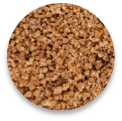
Also called evaporated sugar or whole cane sugar, non-crystallized sugars are not put in a centrifuge and the molasses is not separated out of the crystal. Instead, the juice from crushed sugar cane stalks is clarified and the liquid is evaporated until the sugar spontaneously crystallizes. Usually this forms a solid block after cooling to room temperature.
The resulting sweetener, which retains all molasses and minerals, can be chipped off in chunks or ground into brown granules. Because of its high molasses content and affinity to absorb water, whole cane sugars are typically not free flowing and are very difficult to handle in large, industrial-scale applications. For this reason, they are primarily sold in retail stores for direct consumption.
Depending on the country of origin, whole cane sugar goes by many different names including panela (Latin America), rapadura (Brazil), jaggery (India), kokuto (Japan) etc.
All Global Organics cane sugar ingredients are certified organic and non-GMO. If you would like a sample of any of our organic cane sugar sweeteners, contact your account manager or email info@global-organics.com.
